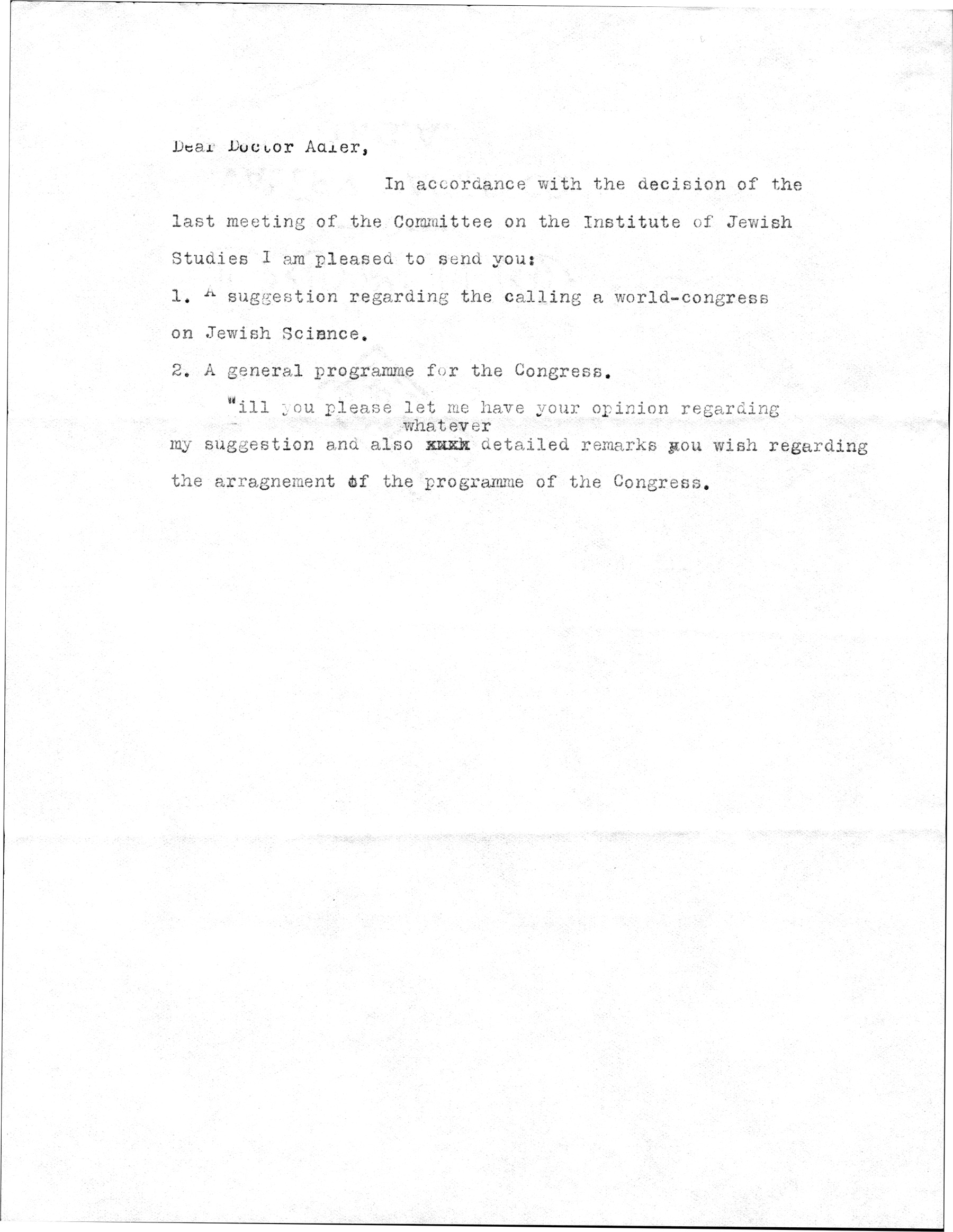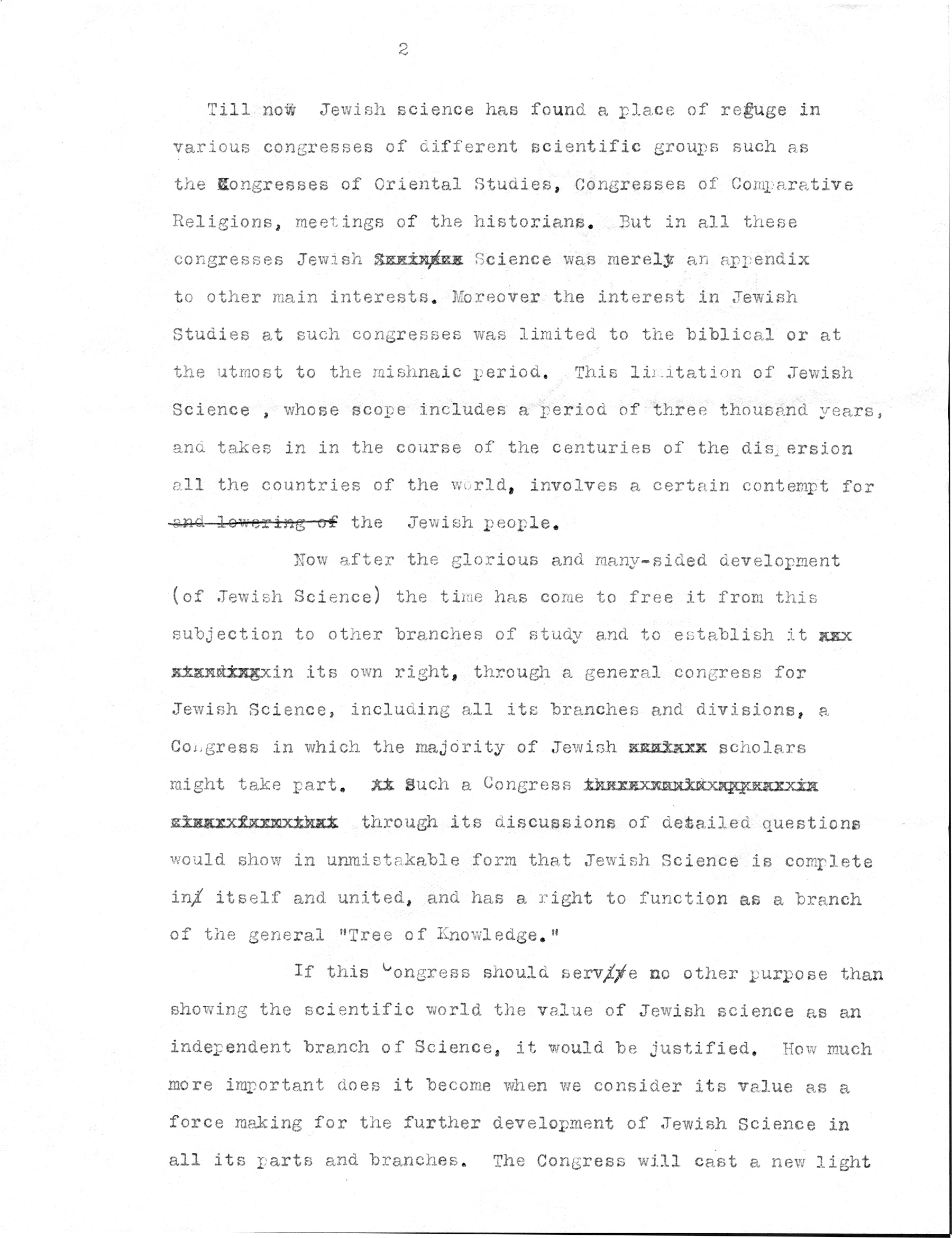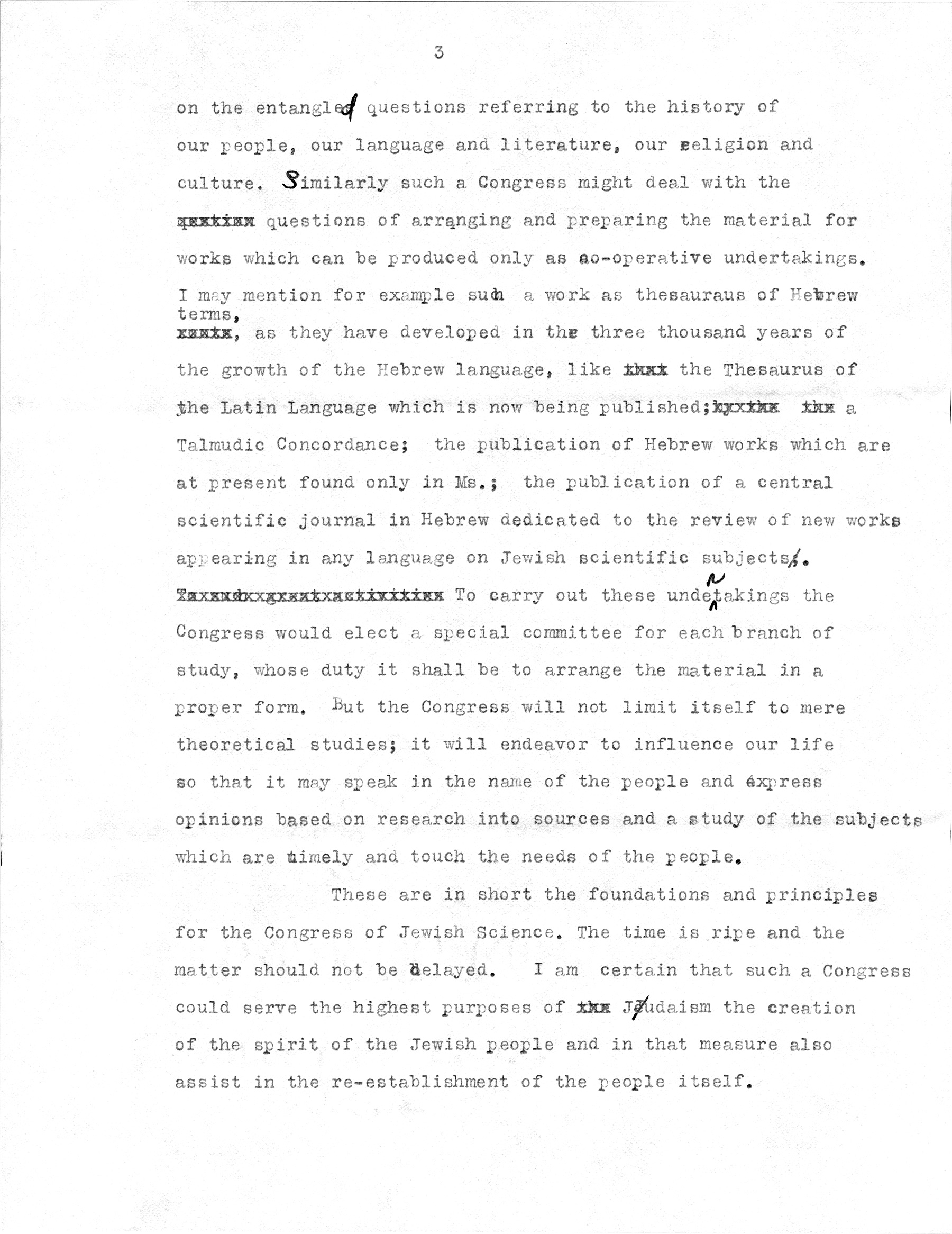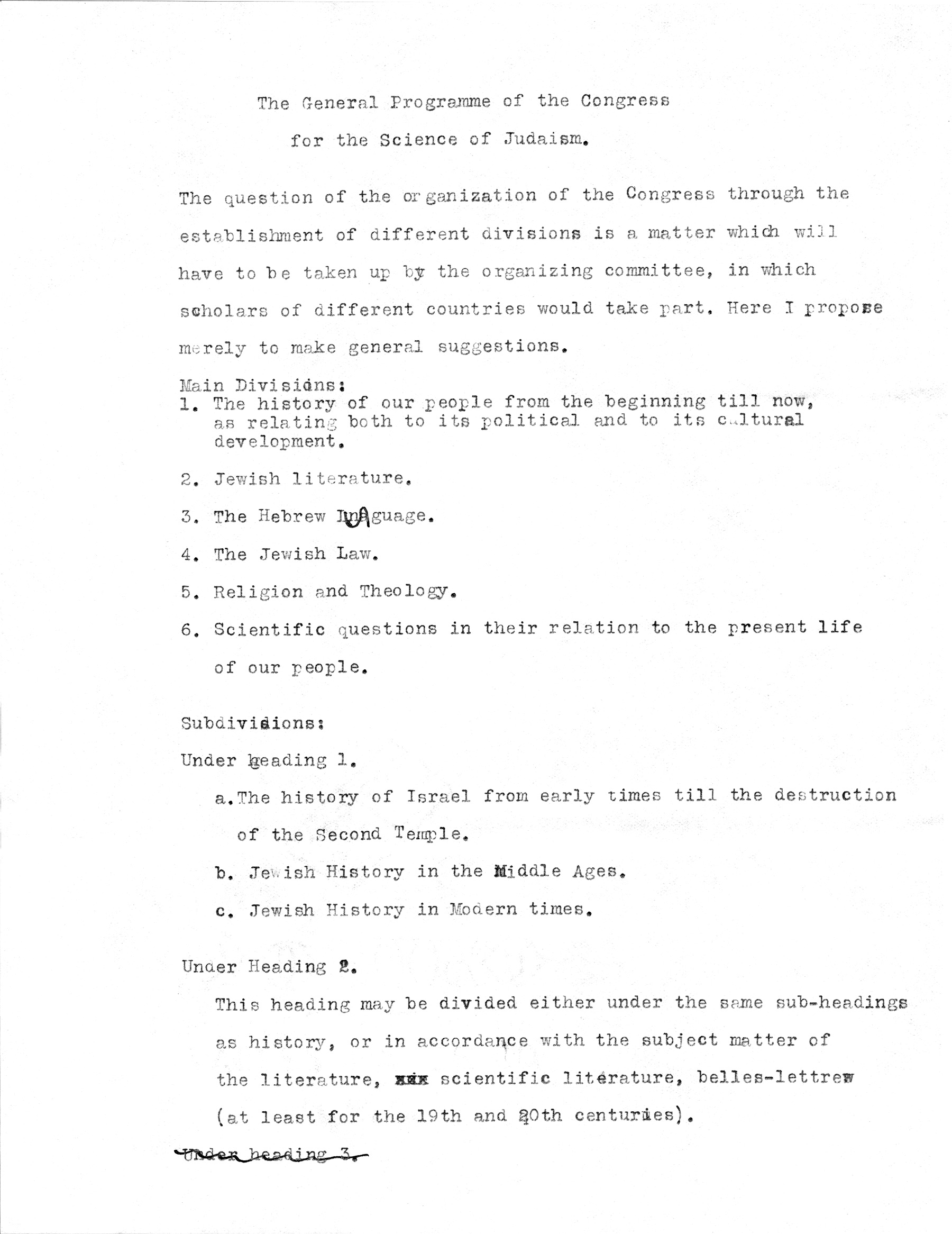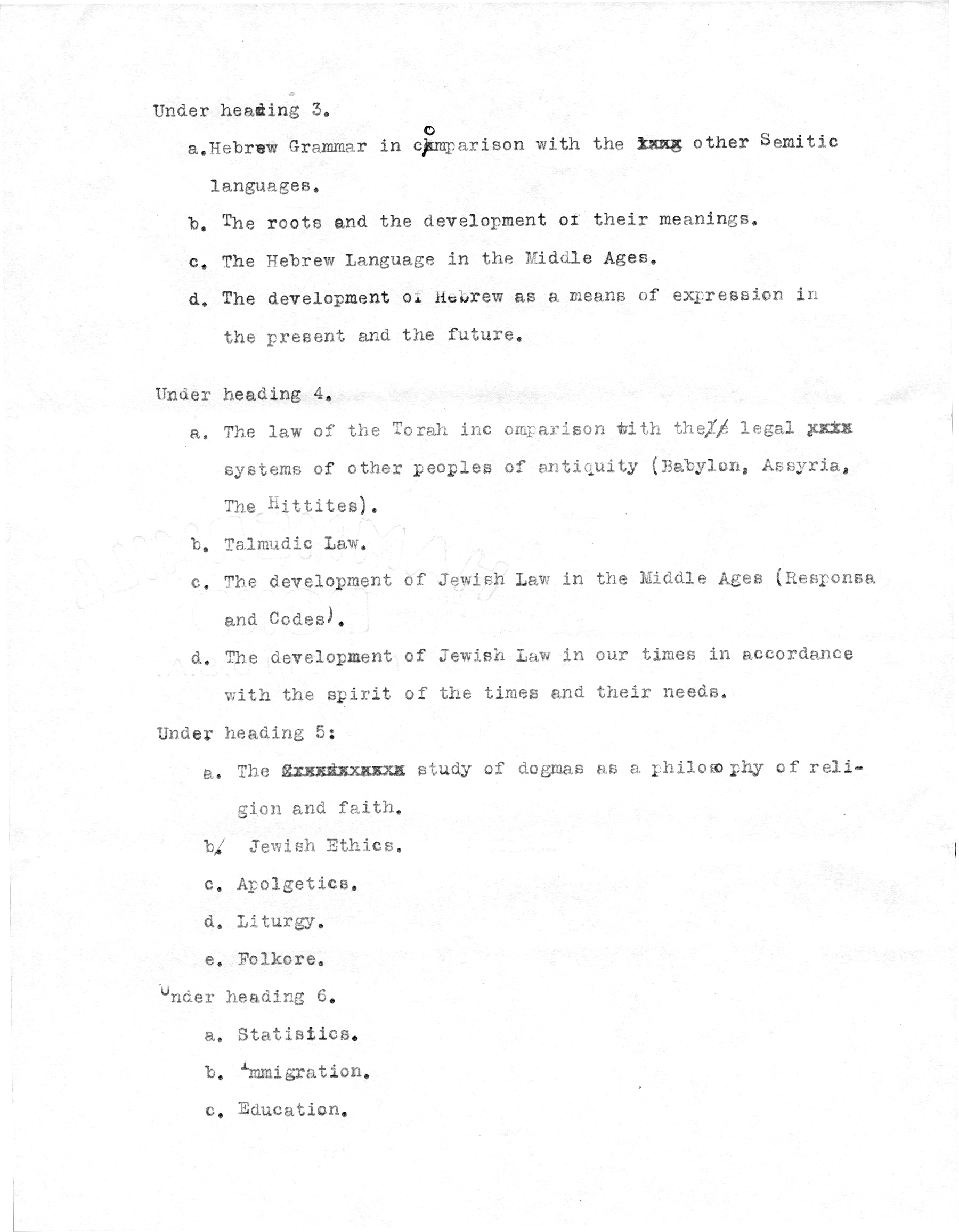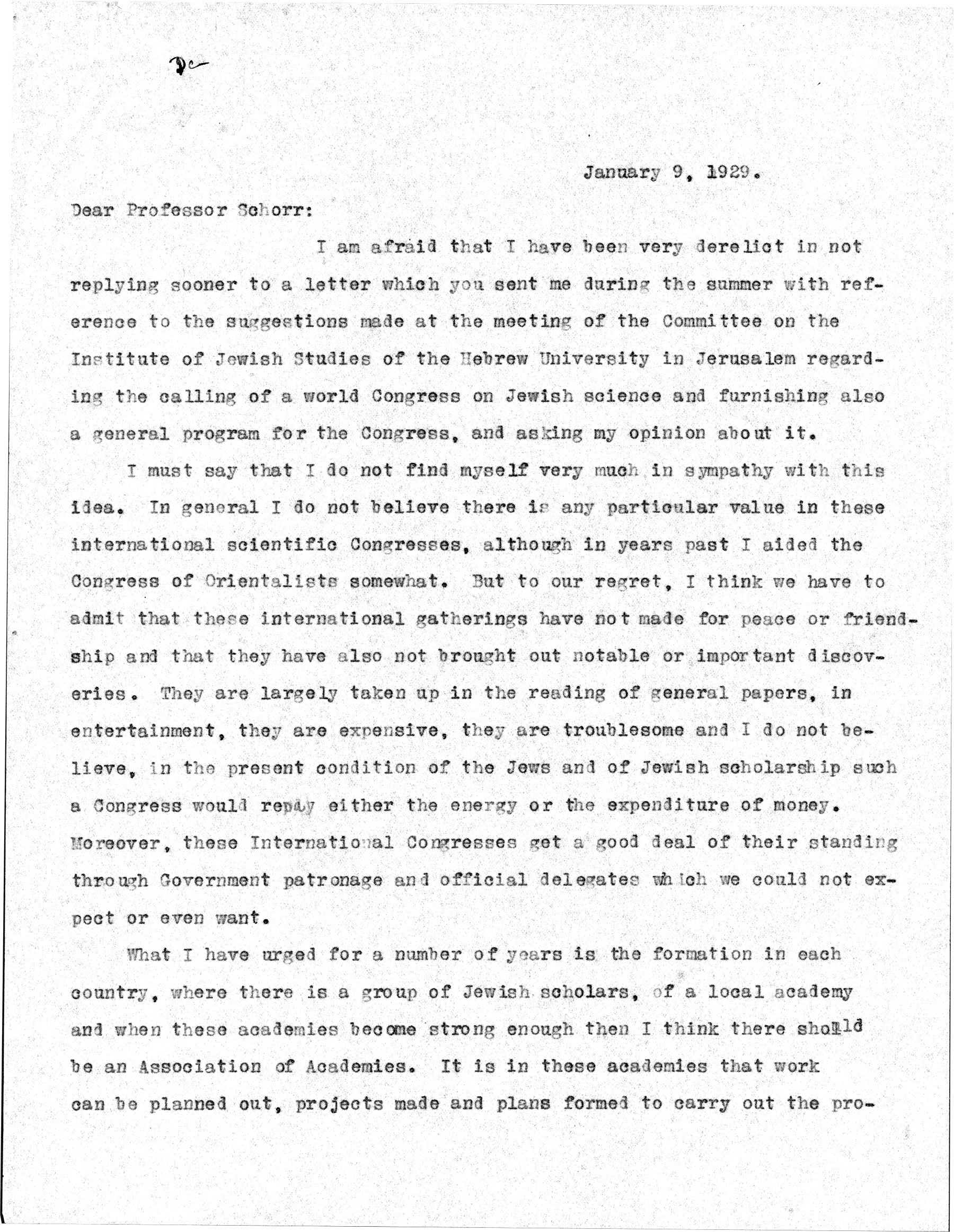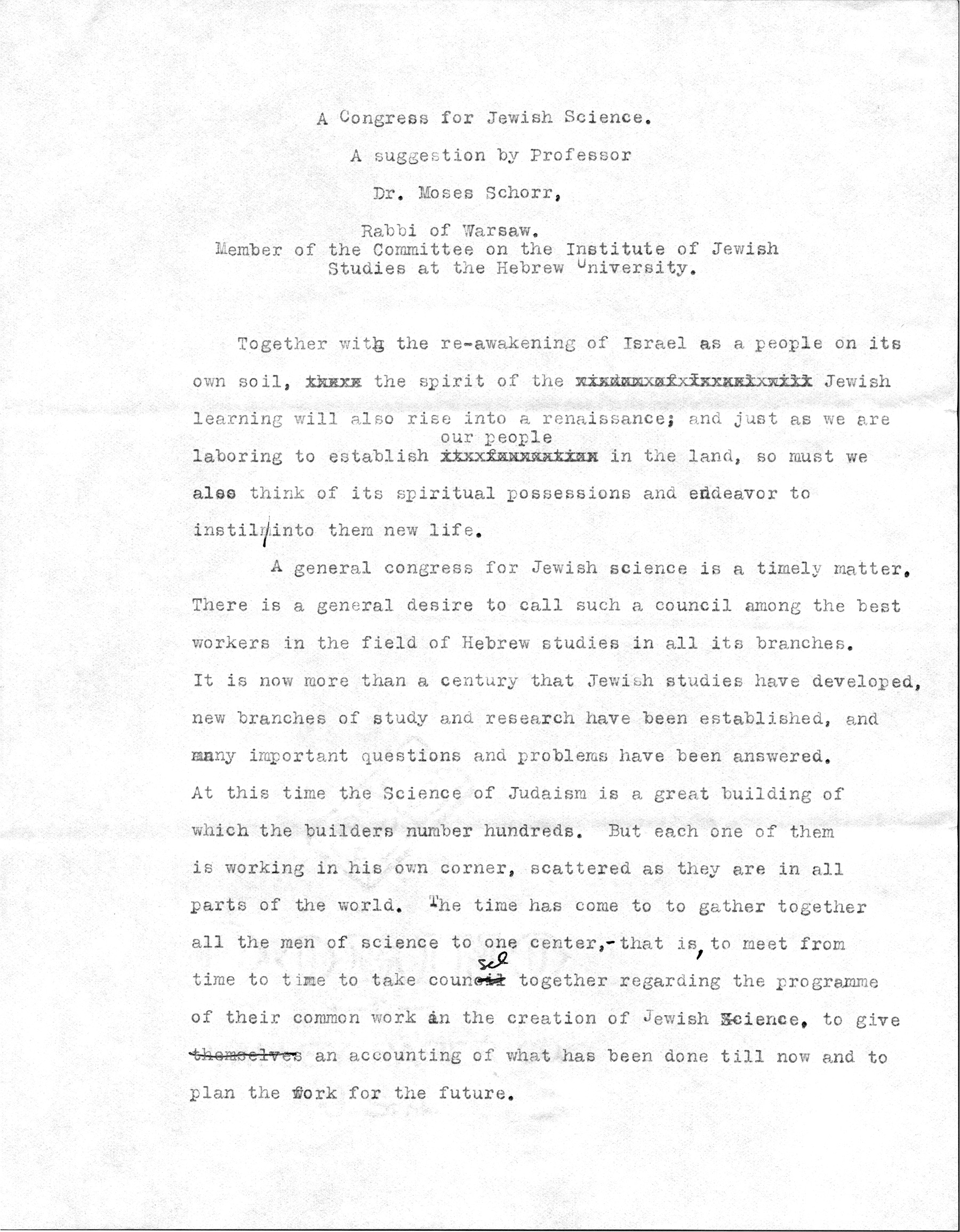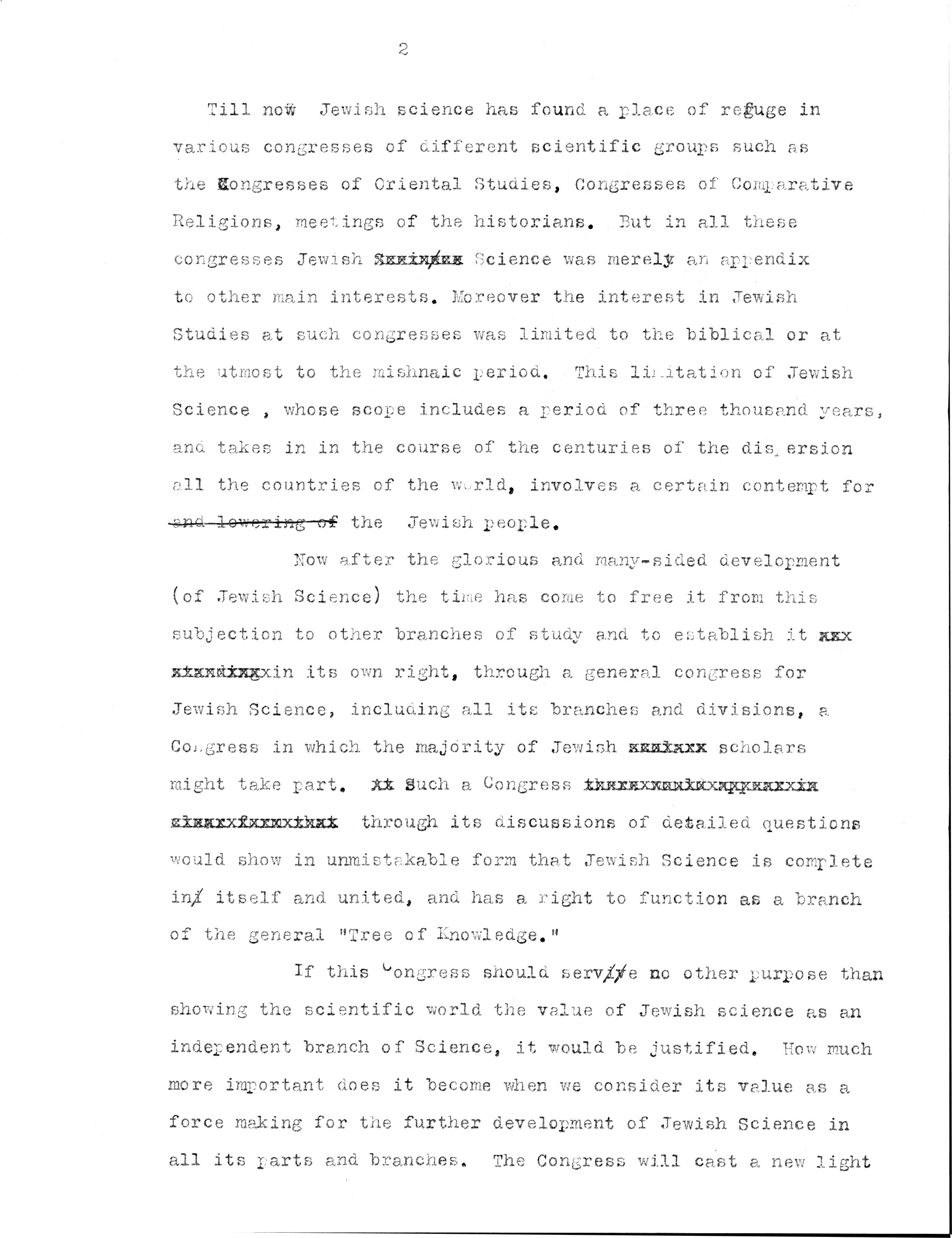Following a festive inauguration of the Hebrew University in Jerusalem in 1925, Jewish scholars who formed the Governing Council of the Institute of Jewish Studies discussed the need to create an international organization representing all aspects of Jewish studies. A member of the Council - Mojżesz Schorr (1874-1941)
Cyrus Adler (1863-1940)
